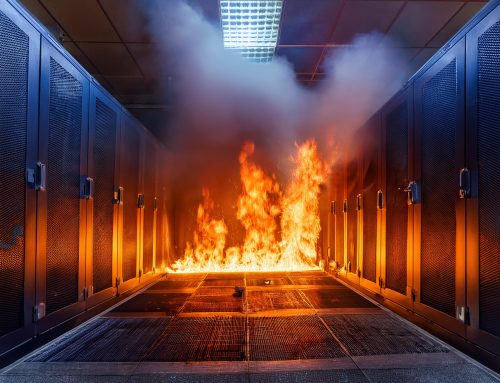Sprinkler system corrosion is a common yet dangerous issue for any facility. The importance of a building’s sprinkler system is paramount in the event of a fire occurring. If a sprinkler system piping is corroded, the system won’t work properly. The results can be devastating.
There are several corrosion monitoring devices on the market today to help in the early detection of sprinkler system corrosion. One company has developed a new and innovative product called an In-Line Corrosion Detector. This product not only prevents corrosion but also gives real-time information on why the corrosion is occurring.
The In-Line Corrosion Detector
The In-Line Corrosion Detector (ILD-X) was developed by Engineered Corrosion Solutions (ECS) to detect corrosion in existing sprinkler systems.
ILD-X acts as a monitoring station for your facility’s piping, delivering a real-time look into why corrosion may be occurring. It also offers constant corrosion management in a way that other products can’t. The detector works by sensing corrosion through the inside of a tube or pipe that’s installed in-line with your existing piping system. The center chamber of the tubing is milled down to 30 mm thickness and mounted in-line with the system piping. If enough corrosion occurs to penetrate this thin wall section, it will latch the pressure switch on top of a sensor and send a signal that corrosion is occurring.
There are many benefits to this type of sprinkler system corrosion management:
- provides constant, electronically supervised corrosion monitoring data
- can be installed on any preaction, dry, or wet pipe sprinkler piping
- designed to work with any size, schedule, or material of sprinkler piping
Damaging effects of sprinkler systems corrosion
 Corrosion, by definition, is the “spontaneous electrochemical oxidation, ionization, and dissolution of metals into contacting water.” In short, corrosion occurs metals are exposed to ionized water. It’s a natural occurring process that is hard to prevent in certain environments. One of those environments is within the piping system of sprinkler sprinklers.
Corrosion, by definition, is the “spontaneous electrochemical oxidation, ionization, and dissolution of metals into contacting water.” In short, corrosion occurs metals are exposed to ionized water. It’s a natural occurring process that is hard to prevent in certain environments. One of those environments is within the piping system of sprinkler sprinklers.
Certain factors can make some sprinkler systems more prone to corrosion (the pH level of the water, design of the piping, temperature levels, pressure, levels, etc.).
Three most common types of corrosion failures in sprinkler piping systems include:
- Pitting (pinholes) that leads to through-wall perforations and leaks
- Build-up of corrosion, often in the form of tuberculation
- General wall loss due to ionization and dissolution of iron atoms
Other options for corrosion management
There are other ways to mitigate corrosion if a product like the In-Line Corrosion Detector won’t work for your building’s sprinkler system.
The National Fire Sprinkler Association (NFSA) notes the most common ways to manage or alleviate corrosion in sprinkler piping. Each method works to eliminate at least one of the three elements needed for corrosion to occur (water, metal, and oxygen). A few of these methods include:
- Choose non-metal piping options
- Protect steel piping through coating, galvanizing, and treatment
- Replace oxygen with noble gas nitrogen
- Vent wet pipe systems
The problem with many of these options is that it is either not applicable or possible with all types of sprinkler systems in all applications/environments.
Fire System, Inc.
The professionals at Fire Systems, Inc. have decades of experience in working with sprinkler systems of all types and in almost all types of facilities big and small. Regular inspection and maintenance of your facility’s sprinkler system is critical in preventing corrosion and can assist you in corrosion mitigation.
“We would definitely suggest any type of corrosion monitoring in a system that we install,” says Gary D., Sprinkler Division Manager for Fire Systems, Inc. “And if it’s too late to install these types of monitors on a system that has already been subject to many years of corrosion and depletion in wall thickness, we would do a survey of all interior piping conditions, replace the affected piping, resurvey and then install the corrosion monitors. We would also suggest a nitrogen system to be installed to also cut down on the possibility of corrosion,” says Gary.
We have a solution for you and aim to keep your facility safe and compliant. Contact us today to find out how we can help. You can reach us at 770-333-7979 or visit our website. You can also check out our blog post on corrosion for more information on this topic.






